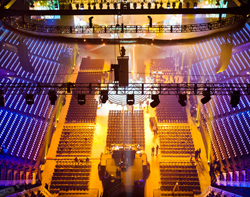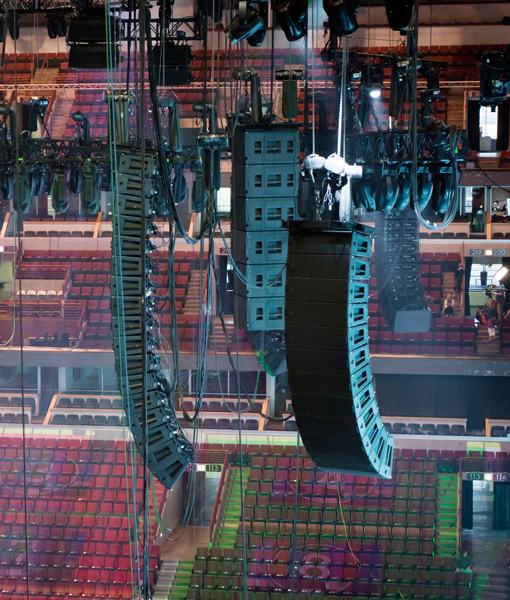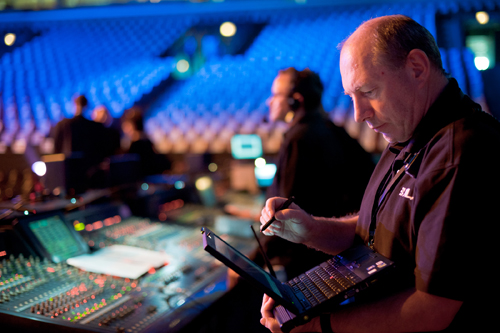
Experience-Derived
The reinforcement system covering the United Center consisted of 99 MLA enclosures, joined by 11 MLD downfill enclosures and 26 MLX subwoofers.
This was deployed in front and side fill arrays, as well as center hall and back hall arrays, with the subs ground-stacked under the stage.
“The configuration we came up with was experience-derived, fairly standard, but we rotated both of those clusters off the stage roughly 5 degrees to give us a slight hole down the middle for the runway and the center stage,” Risgin says.
“This eliminated having to install a separate PA to give us a point source for that stage, which would have meant another about 80 cabinets just to give us proper coverage and would have made things tough for television.
“A lot of people gathered on the smaller remote stage because the show directors and producers thought it was a great place to put people,” he continues. “So the MLA pattern control helped us to bring the image back into the back half of the room and easily tailor the response once we got into the 200 and 300-level rooms at the top of the building.”
MLA is integrated with Class D amplification, digital signal processing and networking. Proprietary Display2 system design software automatically calculates FIR DSP filters for each cell and a redundant-ring audio network (U-NET) downloads the settings into each array enclosure.
In addition, proprietary VU-NET software provides real-time control and monitoring of the system.
“When we did a pre-rig, we just put up the mains. And we had our optimization process and realized that with the PA in there, we had too much energy going in to those top 300-level suites with all of the reflective surfaces,” Risgin says.
“So we changed the vertical pattern coverage of the main and side clusters, fine-tuned them a couple of dB here and there, and reduced those reflections dramatically, all done via software. We never physically touched a cabinet angle once. So the ability to do that was outstanding.”


